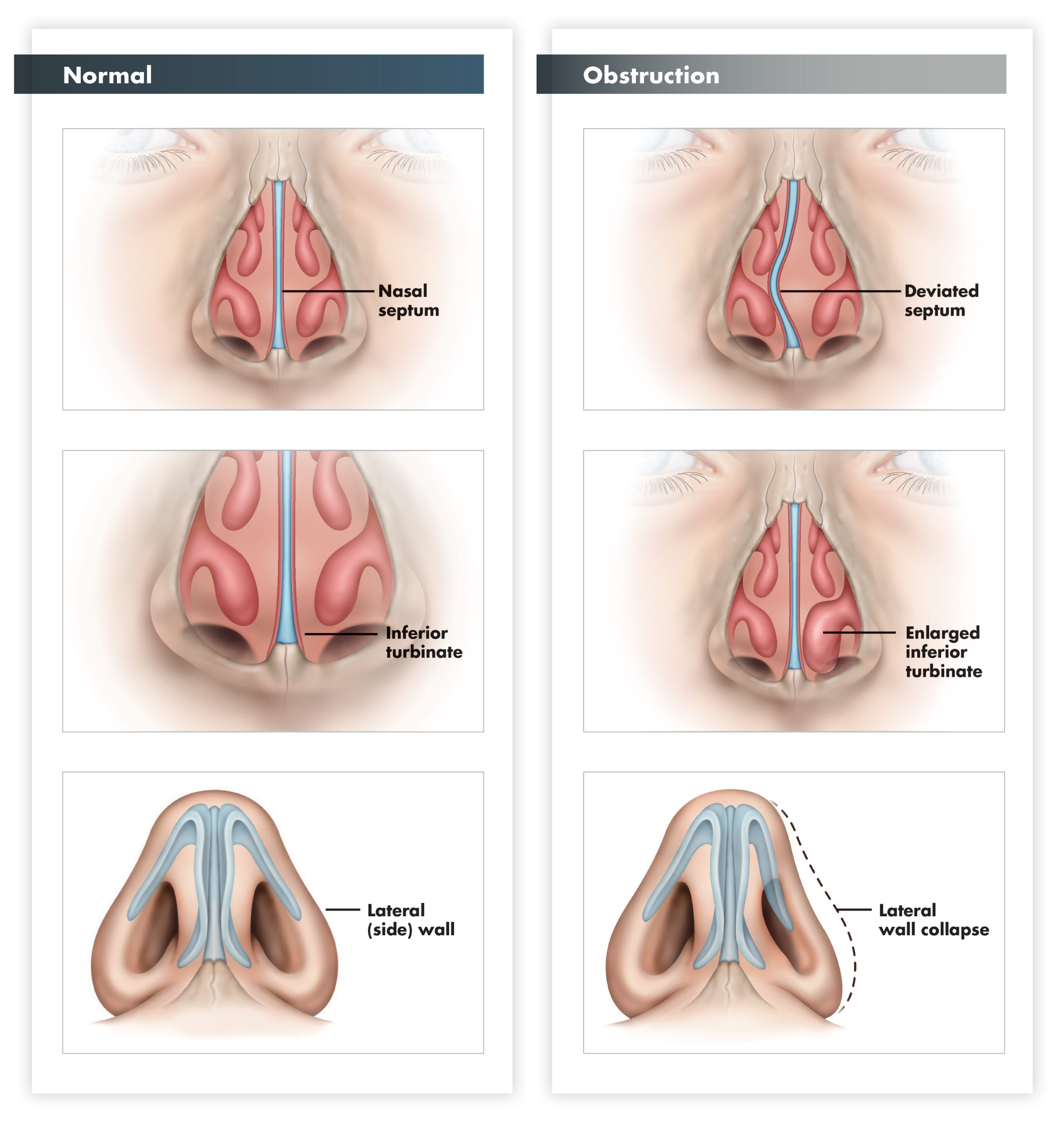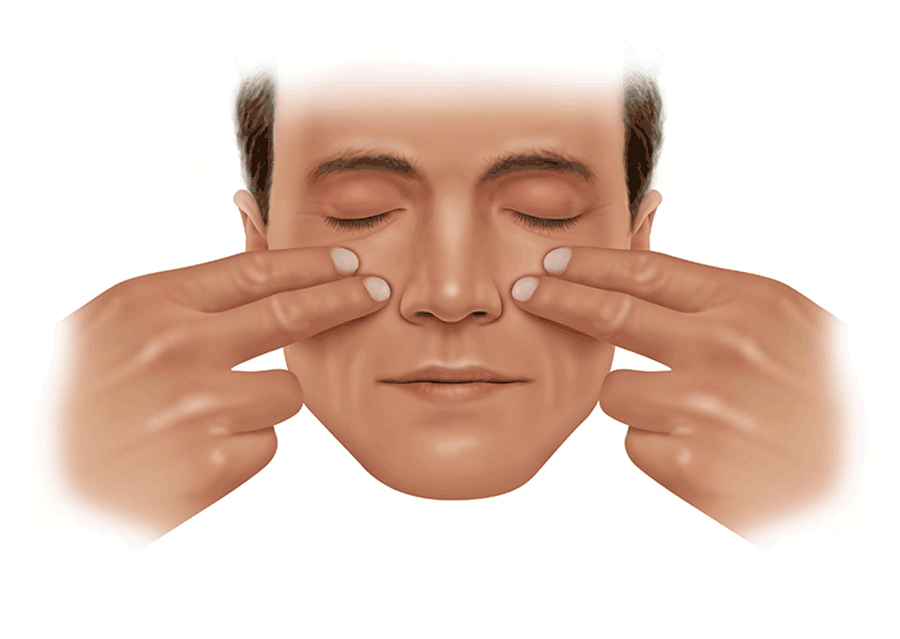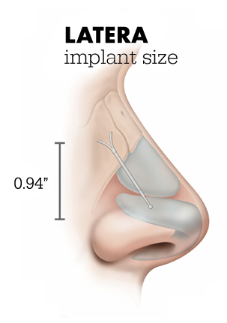LATERA® Nasal Implant
What is nasal airway obstruction?
Nasal airway obstruction is a condition in which the nasal passages are blocked and prevent a normal or comfortable amount of air from passing through the nose. Nasal airway obstruction affects more than 20 million Americans1 and can occur because of a structural abnormality in the nose or because of inflammation and swelling of the nasal passages. With nasal breathing delivering approximately 70% of airflow to the lungs,2 any blockage that limits airflow can cause significant quality-of-life consequences.3

What causes nasal airway obstruction?
Even a slight narrowing of the nasal valve can lead to significant reduction in airflow.4-6 Structural blockages in 3 areas are common:
-
Septum: The cartilage wall between the nostrils can bend and block the nasal passage.
-
Turbinates: Ridges of bone and tissue inside the nose can limit airflow when enlarged.
-
Lateral (side) wall: Weak or excessively flexible upper/lower cartilage in the outer nasal wall may cause it to collapse inward when a person inhales.
Lateral wall collapse may equal or even exceed septal deviation as the prime cause of nasal airway obstruction.
Is lateral wall collapse contributing to your nasal airway obstruction?
To determine whether the lateral wall is contributing to your nasal airway obstruction, a number of approaches may be used. If your symptoms improve from a simple breathing test called the Cottle Test or from the use of nasal strips during normal activity and sleep, then you may benefit from support of the lateral nasal wall.

Try the Cottle Test
- Place two fingertips on your cheeks, on the sides of your nose.
- Gently press and pull outward to further open your nasal passage. While holding, breathe through your nose.
If your breathing improved, talk to an ENT specialist about options to support your lateral nasal cartilage, which may include the LATERA® implant.
Experience What It’s Like to Breathe Easier
If you’ve forgotten what it’s like to breathe through your nose, LATERA® may be able to help with little risk of changes to appearance.10 LATERA® is an absorbable nasal implant used to support the upper and lower cartilage inside the lateral (side) wall of your nose. Supporting the cartilage may reduce nasal airway obstruction symptoms and help you breathe better.9,10 The implant is placed inside the nasal wall by an otolaryngologist (ear, nose, and throat [ENT] specialist).
A clinical study shows that LATERA patients demonstrate10:
- Reduced nasal congestion, stuffiness, nasal blockage, or obstruction
- Less trouble breathing through the nose and improved ability to get enough air through the nose during exercise or exertion
- Less trouble sleeping

Am I a candidate for a LATERA® nasal implant?
The Nasal Obstruction Symptom Evaluation (NOSE) survey9 is an assessment tool designed to capture how your breathing symptoms are affecting your quality of life. Take the NOSE survey and schedule an appointment with one of our ENT specialists at Quincy Medical Group’s Ear, Nose, and Throat (ENT) department to determine if LATERA® is right for you.

